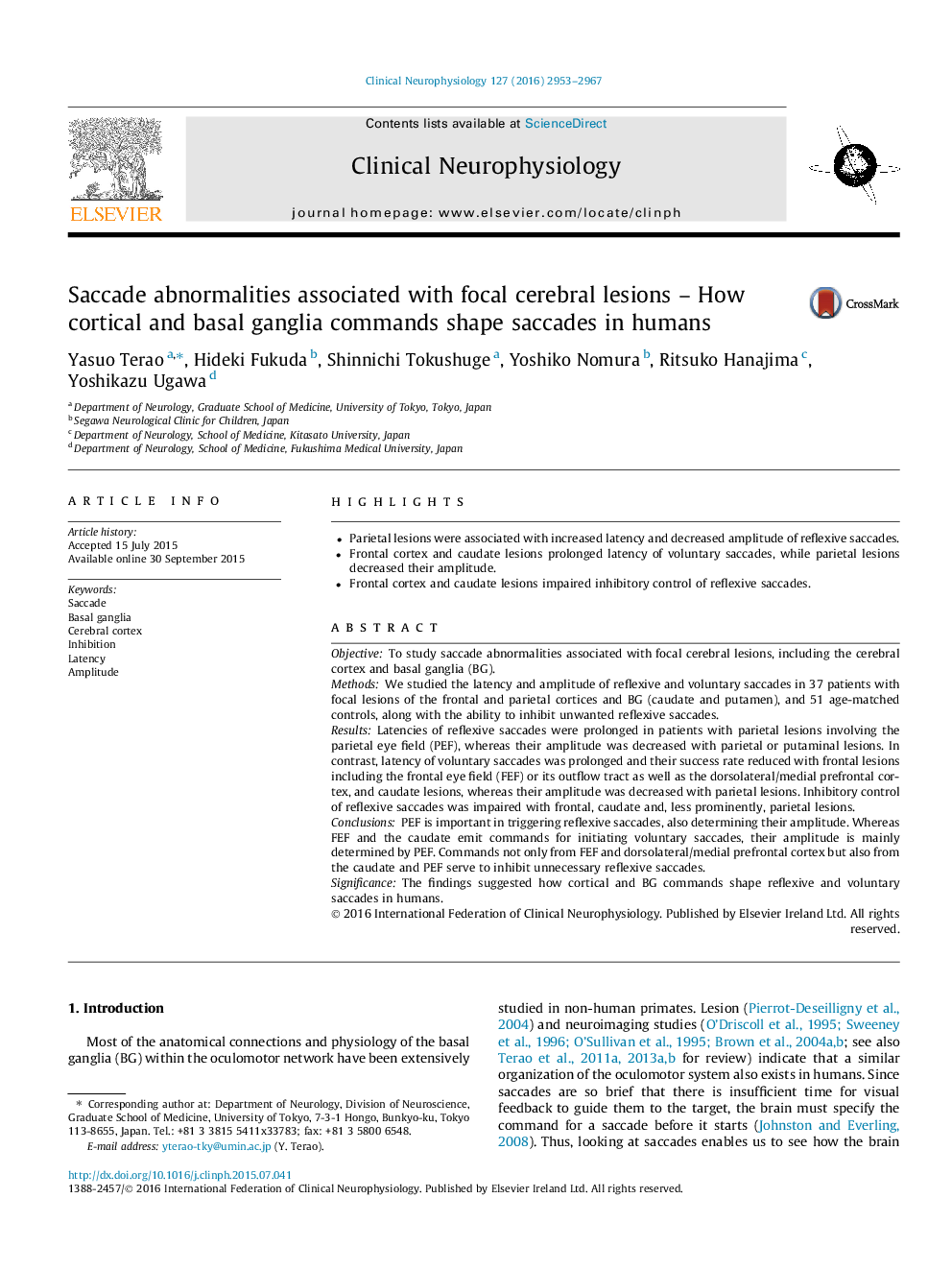| Article ID | Journal | Published Year | Pages | File Type |
|---|---|---|---|---|
| 3042664 | Clinical Neurophysiology | 2016 | 15 Pages |
•Parietal lesions were associated with increased latency and decreased amplitude of reflexive saccades.•Frontal cortex and caudate lesions prolonged latency of voluntary saccades, while parietal lesions decreased their amplitude.•Frontal cortex and caudate lesions impaired inhibitory control of reflexive saccades.
ObjectiveTo study saccade abnormalities associated with focal cerebral lesions, including the cerebral cortex and basal ganglia (BG).MethodsWe studied the latency and amplitude of reflexive and voluntary saccades in 37 patients with focal lesions of the frontal and parietal cortices and BG (caudate and putamen), and 51 age-matched controls, along with the ability to inhibit unwanted reflexive saccades.ResultsLatencies of reflexive saccades were prolonged in patients with parietal lesions involving the parietal eye field (PEF), whereas their amplitude was decreased with parietal or putaminal lesions. In contrast, latency of voluntary saccades was prolonged and their success rate reduced with frontal lesions including the frontal eye field (FEF) or its outflow tract as well as the dorsolateral/medial prefrontal cortex, and caudate lesions, whereas their amplitude was decreased with parietal lesions. Inhibitory control of reflexive saccades was impaired with frontal, caudate and, less prominently, parietal lesions.ConclusionsPEF is important in triggering reflexive saccades, also determining their amplitude. Whereas FEF and the caudate emit commands for initiating voluntary saccades, their amplitude is mainly determined by PEF. Commands not only from FEF and dorsolateral/medial prefrontal cortex but also from the caudate and PEF serve to inhibit unnecessary reflexive saccades.SignificanceThe findings suggested how cortical and BG commands shape reflexive and voluntary saccades in humans.
